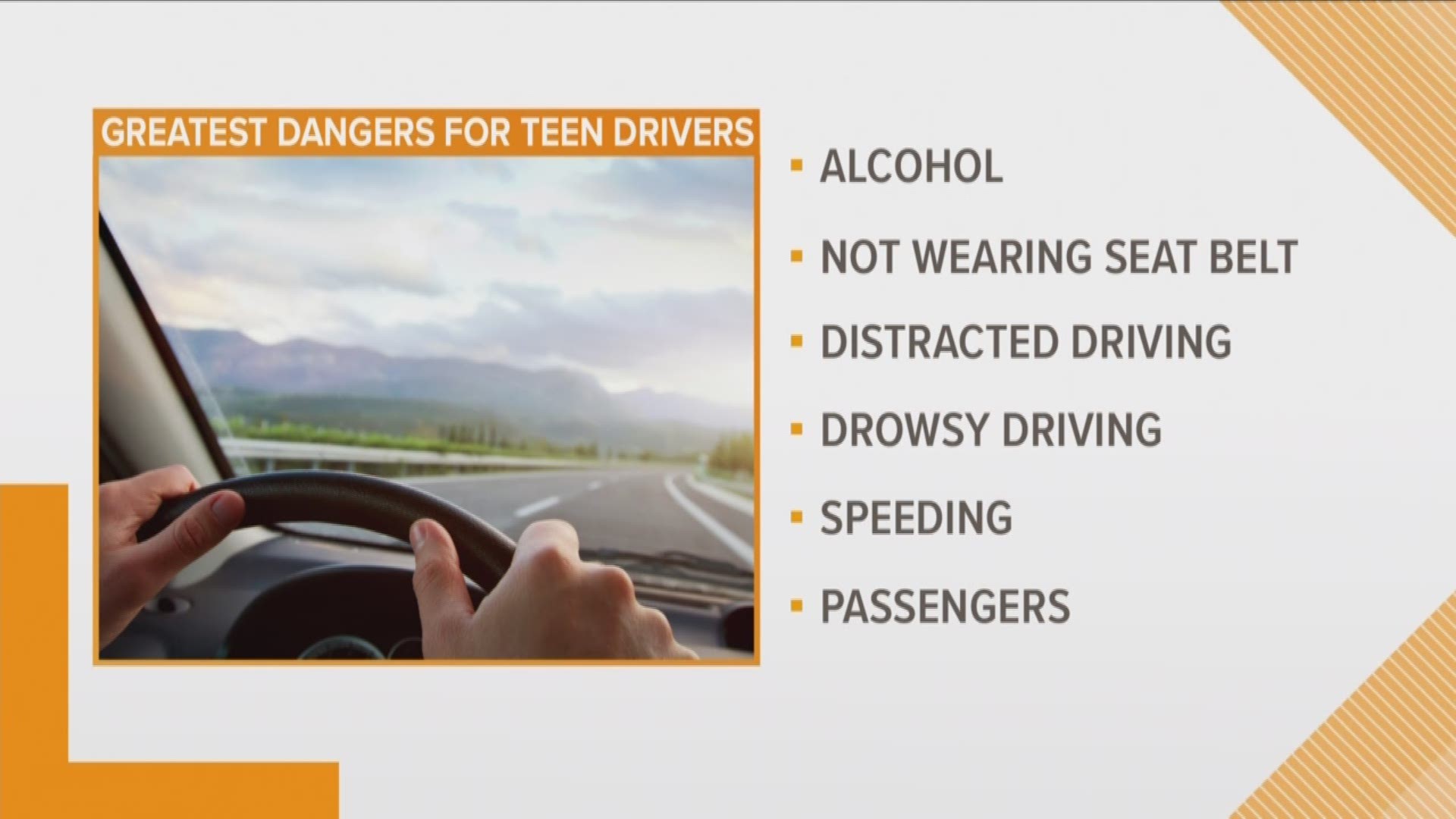GREENSBORO, N.C. - The U.S. Department of Transportation's National Highway Traffic Safety Administration (NHTSA) has marked October 15-21 as National Teen Driver Safety Week.
It's all about encouraging parents and teens to take the essential steps to prevent accidents behind the wheel.
Did you know crashes are still the leading cause of teen deaths?
Some of the greatest dangers for teen drivers include alcohol, inconsistent or no seat belt use, distracted and drowsy driving, speeding, and passengers.
The NHTSA, along with state and local law enforcement agencies, want parents to talk to their teen drivers about the importance of obeying the road rules and driving safety.
The NHTSA provides the following talking points and safety tips for parents to help their teen drivers stay safe on the road:
Avoid Distracted Driving: One in three teens who text say they have done so while driving. Is your teen one of them? Research has found that dialing a phone number while driving increases your teen's risk of crashing by six times, and texting while driving increases the risk by 23 times.
- Talk to your teen about the rules and responsibilities involved in driving.
- Share some stories and statistics related to teen drivers and distracted driving.
- Remind your teen often that driving is a skill that requires the driver's full attention.
- Texts and phone calls can wait until arriving at his or her destination.
- Restricting the number of passengers your teen can have, or the hours your teen can drive, is a very effective way to minimize distraction for your teen driver.
- Talk about the consequences of distracted driving and make yourself and your teen aware of your State's penalties for talking or texting on a phone while driving.
- Set consequences for distracted driving.
- If your teen breaks a distraction rule you've set, consider suspending your teen's driving privileges, further limiting the hours during which they can drive, or limiting the places where they can drive.
- Set the example by keeping your eyes on the road and your hands on the wheel while driving.
- Be consistent between the message you tell your teen and your own driving behaviors. Novice teen drivers most often learn from watching their parents.
Be Mindful Of Passengers: In a study analyzed by NHTSA, teen drivers were two-and-a-half times more likely to engage in one or more potentially risky behaviors when driving with one teenage peer, compared to when driving alone.
- Familiarize yourself with your State's graduated driver licensing (GDL) law, and enforce its guidelines for your teen.
- Set your own additional rules and consequences.
- Establish the consequences you will enforce if your teen doesn't obey the State GDL restrictions.
- If your State doesn't have a passenger restriction, establish your own rule limiting the number of passengers in the car and enforce it.
No Speeding: Speeding is a critical safety issue for teen drivers. In 2016, it was a factor in 32 percent of the fatal crashes that involved passenger vehicle teen drivers.
- Get involved. Teens who are monitored closely tend to speed less.
- Take the lead to do more to address speeding behavior by your teen driver and get involved in the learning-to-drive process.
- Be a good role model. Never speed. Be consistent between the message you tell your teen and your own driving behaviors. Kids learn from watching their parents.
- Hold up on buying your teen a new car. Studies show when a teen first has a driver's license, he or she is more likely to speed in their own vehicle versus driving the family sedan.
- If possible, parents should choose larger, newer cars rather than high-performance vehicles.
Drive Sober Or Get Pulled Over: One in 10 teens in high school drinks and drives.
- Tell your teen that underage drinking, as well as illicit drug use and over-the-counter and prescription drug misuse, is illegal and holds serious consequences.
- Together, read about some teenagers who've been affected by alcohol or drugs and particularly those who have lost their lives to impaired driving.
- Never provide alcohol to teens. Do your part to prevent your teen from having access to alcohol.
- Tell your teen that driving while impaired by drugs is illegal, too. The use of drugs can affect their ability to drive a vehicle safely.
- Teach your children about zero-tolerance laws, which make it illegal to drive with any measurable amount of specified drugs in the body.
- Remind your teen that it is never safe to ride in a car with someone who has been drinking alcohol or using drugs.
- Make the consequences clear. Remind your teens that they face adult consequences for driving after using alcohol or drugs.
- Make sure your teens know that if they violate underage drinking laws, they face a trip to jail, the loss of their driver licenses, and dozens of unanticipated expenses including attorney fees, court costs, and other fines.
Buckle Up, It's The Law: Seat belt use is lowest among teen drivers. In fact, the majority of teenagers involved in fatal crashes are unbuckled.
- Tell your teen that not only is buckling up the law, it's also one of the easiest and most effective actions in reducing the chances of death and injury in a crash.
- Help your teen understand why seat belts saves lives and prevent ejection from a vehicle.
- Make them aware of the consequences of not buckling up: tickets, loss of driving privileges, injury, or even death in the event of a crash.
- One of the best things you can do as a parent and role model is to always wear your seat belt in the car.
- Ask your teen often about wearing a seat belt, and give simple reminders from time to time.




